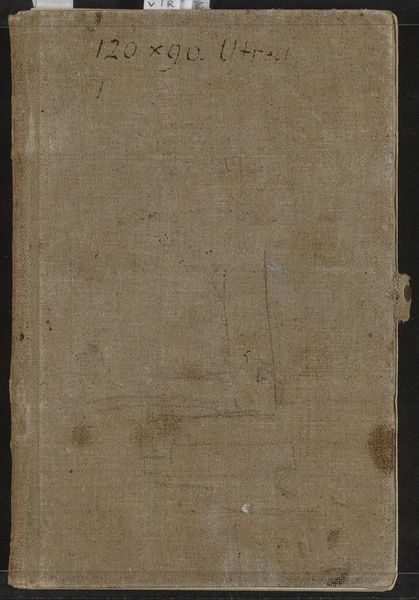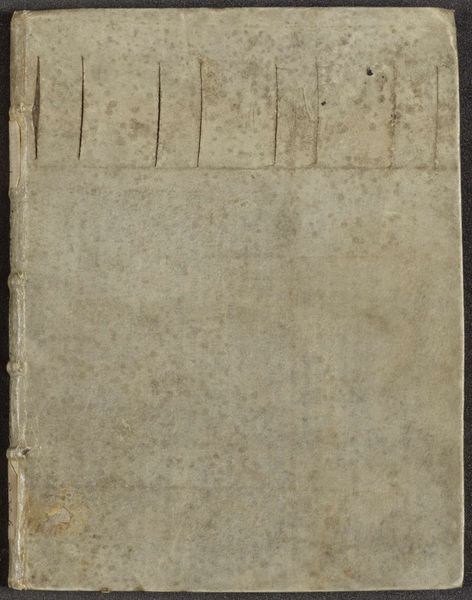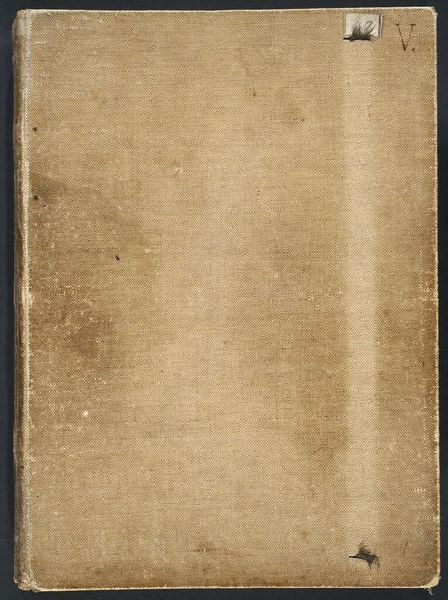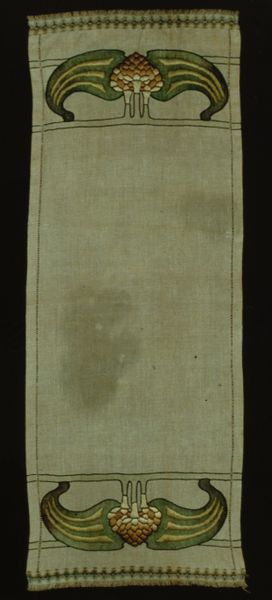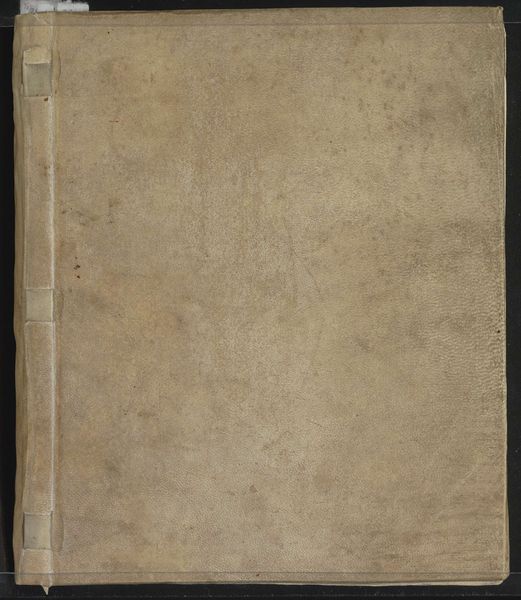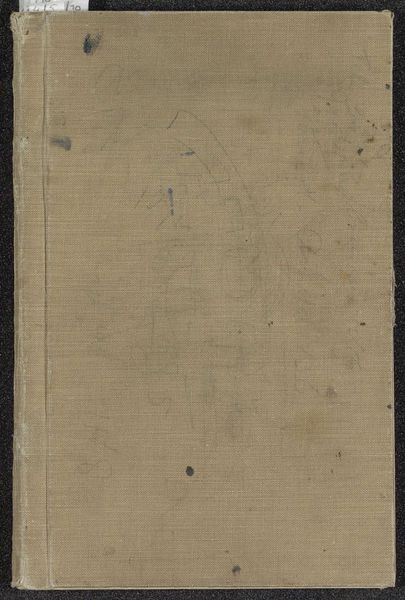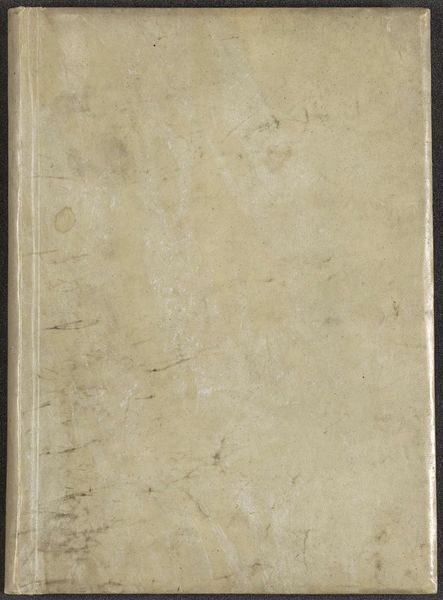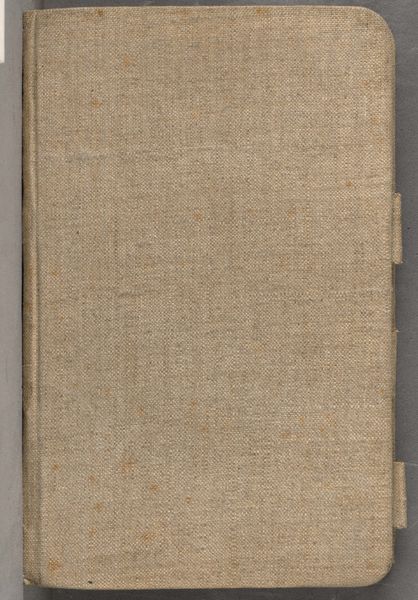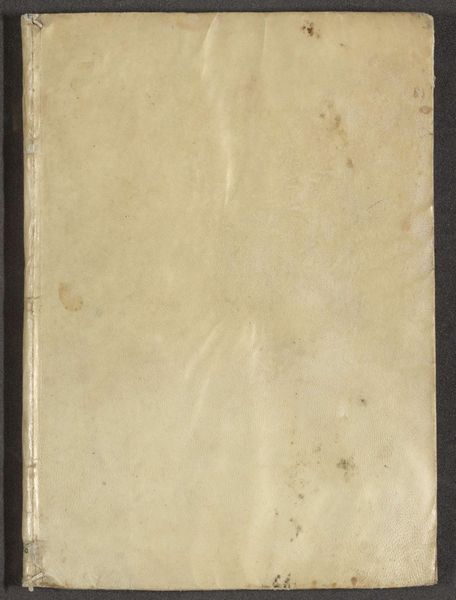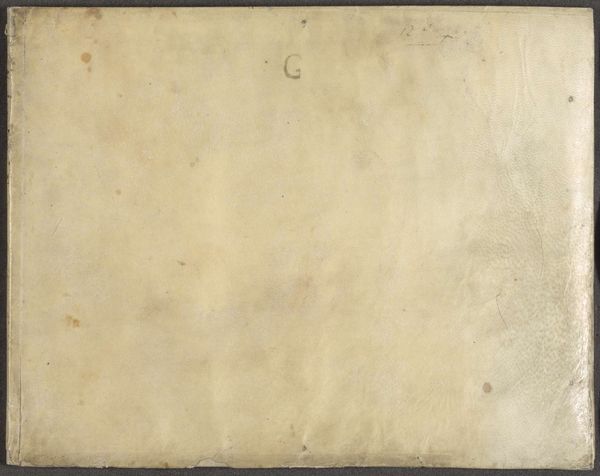
Dimensions: height 254 mm, width 190 mm, thickness 12 mm, width 383 mm
Copyright: Rijks Museum: Open Domain
Curator: At first glance, this simply looks like the cover of a well-worn notebook. Editor: Well, you're not far off! What we're seeing is the cover of "Sketchbook with 28 Leaves" by Willem Witsen, dating from around 1893 to 1897, which is held here at the Rijksmuseum. Curator: The muted color, the almost distressed texture of the cover itself...it speaks volumes about the life of a working artist. I'm curious about the physical object itself, the paper, the binding. What kind of materials were used, and where did they come from? Was this a common type of sketchbook, easily available, or something more bespoke reflecting Witsen's status and networks? Editor: Those are excellent questions! Considering Witsen’s position within the art world, it's important to understand how sketchbooks like this one functioned within the institutional framework. The very act of sketching, and its place within art education and professional practice. Was it a private act, a public display, or a commodity intended for eventual sale or circulation amongst artistic circles? Curator: I'd argue it’s a complex interaction between those! Was the sketchbook meant for preparatory work or seen as artworks in themselves, a physical embodiment of creative labour? The history and availability of such materials surely played a role in his artistic choices. Were there cheaper alternatives and what implications might those limitations of artistic production had? Editor: Absolutely. The social circles in which he mixed – other artists, patrons – these connections shaped what he created, and how his art was ultimately perceived and received. Witsen was, of course, very active in Amsterdam's art scene. This sketchbook, in a way, connects to those broader narratives. It illustrates his integration with artistic and intellectual circles of his time. Curator: To consider that it likely travelled with him, witnessing moments of artistic insight, bearing traces of studio and outdoor environments... fascinating! The materials aren't just a means to an end; they are evidence of a specific socio-economic reality, the daily practice of a working artist. Editor: Indeed. Viewing the sketchbook not just as an art object but as an historical artifact adds layers of understanding to Witsen’s overall artistic output and standing. A document of social and aesthetic exchange during a transformative period in Dutch art. Curator: Thank you, that reframing brings such richness to the encounter with this artwork. Editor: My pleasure! I'll never look at a sketchbook the same way.
Comments
No comments
Be the first to comment and join the conversation on the ultimate creative platform.
